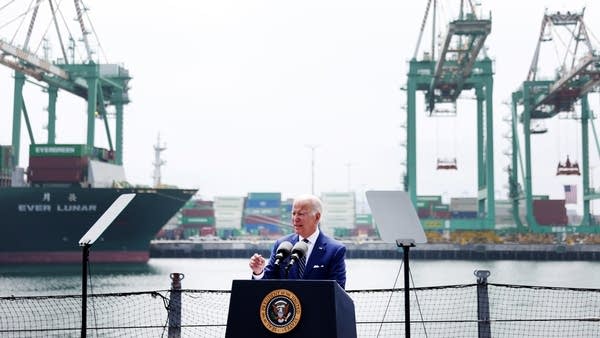Port congestion is easing. But supply chain congestion isn’t going away soon.
China’s COVID-19 lockdowns, which shut down much of the country’s manufacturing and exports, are partly to blame.

President Joe Biden was at the Port of Los Angeles on Friday, where he said fighting inflation is his top economic priority. The backdrop was entirely intentional given that one of the many causes of the inflation we’ve been experiencing has been the congested supply chain. After all, if the supply of the stuff we want can’t keep up with demand, prices rise.
That said, the Marine Exchange of Southern California — which tracks shipping activity at the ports of Los Angeles and Long Beach — said the port complex had just 20 ships waiting to unload on Thursday. That’s down from 109 ships in January.
Part of what’s going on has to do with China’s COVID-19 lockdowns, which shut down much of the country’s manufacturing and exports.
Also, a lot of American companies haven’t been ordering as much inventory lately, according to Zac Rogers, an assistant professor of operations and supply chain management at Colorado State University.
“And we’re not seeing that nearly as much because we have so much inventory that we’d hoped to sell in the holiday season that didn’t get here until the spring,” Rogers said.
After more than two years of supply chain bottlenecks, an economy without supply chain congestion would start to feel different pretty quickly, said Laura Veldkamp, an economics professor at Columbia University.
“If producers know that they can get parts reliably, if container prices start falling, that’s going to make doing business less expensive right away,” she said.
But we shouldn’t get excited just yet.
Weston LaBar, the head of strategy at the freight broker Cargomatic, said that in China there are more than 300 ships waiting to load up and head to the United States. And now, China’s COVID lockdowns are easing up.
“Those 300 ships are starting to get loaded as things get back up and running in ports like Shanghai,” LaBar said. “And with that, we will see a freight tsunami coming in.”
Meanwhile, warehousing space in the U.S. is really tight. But Rogers at Colorado State University said that could change as companies start to whittle down their extra inventory.
“And so one of the things that’ll happen is, as we wind that inventory down, our throughput at the ports will be able to increase,” Rogers said.
The question, he said, is whether that’ll happen before the freight that’s been held up in China starts hitting U.S. ports.










